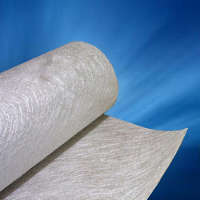10 Quick Tips About Fibreglass
This entry was posted on Sep 30, 2014 by speedy-bedFibreglassing is generally known as a project that requires professionals, but if simplified, and well researched it can become a job that ‘do it yourselfers’ are able to complete. By following some tips that are listed below, anyone can apply fibreglass if necessary.
Fibreglass matting – when applying fibreglass you should cut the matting to length prior to covering the boards with resin, this will prevent mess and help your project run smoothly.
Taping joints – by using fibreglass tape which is a more compact version of chopped strand matting to cover joints between boards, you will help prevent the problem of cracking occurring to a flat roof, overtime.
Trims – when applying trims such as drip trims by using timber battens between the bottom of the trim and the wall of the building, you will stop the trim flapping in the wind, and highly reduce the chance of cracks appearing around the circumference of the trims.
Tacking trims – simply use a short big head nail such as a felt nail to tack down your trims to the boards. This will prevent the trims from moving when applying resin and therefore prevent fibreglass cracking.
Test sample – as different weather conditions can change the way fibreglass sets, it is always a good idea to make a small sample in a bucket first, so you will know how much catalyst is needed, to ensure you get the correct mix and finish your roof.
Coverage of base coat – it is important not to get carried away when applying resin to your roof. The resin should only just cover the matting, if too much resin is applied this will cause cracks to appear when the roof is finished.
Use of correct trims – when joining trims on corners, you can use a pre molded corner, this will help produce a good standard finish to your roof.
Prepping boards – some people when doing flat roofs pre coat the boards with resin before placing on roof, this will help to make your roof long lasting and help to prevent damage occurring to the boards.
Applying topcoat – when applying topcoat some people use a brush, but by using a roller you can get much better coverage, and an even finish to your roof.
Paddle roller – by using a paddle roller to compress the matting in to the resin you will prevent air bubbles from occurring therefore making the lifespan of your roof longer.
By following these tips it will help you to produce a high quality flat roof.

